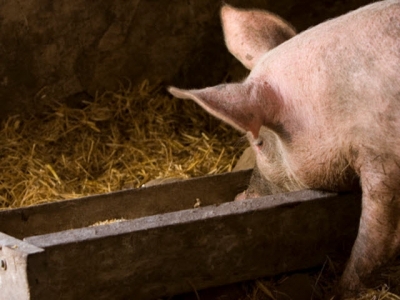Amino acids versus crude protein in animal feed
In brief, as long as monogastric (or non-ruminant) animals receive adequate levels of amino acids, one needs to pay but little attention to crude protein.
 Six unique ingredients to lower piglet feed cost
Six unique ingredients to lower piglet feed cost It is possible to have high-quality diets with less expensive alternative ingredients; you simply have to know where to find the ingredients.
 Pig low-protein diets could reduce nitrogen excretion
Pig low-protein diets could reduce nitrogen excretion Feeding low-protein diets to pigs can reduce nitrogen excretion, according to research conducted by the University of Bristol and Scottish Agricultural College.
 Feeding modern pigs low protein diets
Feeding modern pigs low protein diets The benefits of feeding diets low in crude protein are examined in view of the recent increases in pig feed prices worldwide.
 Controlling salmonella in swine feed worth the expense
Controlling salmonella in swine feed worth the expense Risk management measures taken in feedstuff supply chain and pork affect prevalence of salmonella up to consumer level.
 Six pig, poultry alternative feed ingredients
Six pig, poultry alternative feed ingredients We constantly look for such novel ingredients to reduce cost and replace ingredients that are no longer available. Six pig, poultry alternative feed ingredients
 What is wrong with feeding pigs, poultry animal by-products?
What is wrong with feeding pigs, poultry animal by-products? Let's examine each case more closely because it is a topic that keeps surfacing, causing considerable concern and, in my opinion, more harm than good to all par
 Feed formulation: How to maximize corn in pig diets
Feed formulation: How to maximize corn in pig diets Understanding the finer aspects of using corn in pig diets can help reduce feed cost and improve the precision of nutrition, resulting in more efficient
 Low protein piglet diets require phenylalanine, tyrosine monitoring
Low protein piglet diets require phenylalanine, tyrosine monitoring Piglet diets with a low crude protein (CP) concentration are recommended when in-feed antibiotics are not used and diarrhea is likely to occur.
 5 guidelines for alternative animal feed ingredients
5 guidelines for alternative animal feed ingredients Whether it is rye or copra meal, using a non-conventional ingredient requires attention to certain issues common to all alternative options.
 Using apple pomace as an animal feed ingredient
Using apple pomace as an animal feed ingredient The apple juice and cider industries are a global source of a useful byproduct, apple pomace, that is much more than a source of fiber for ruminants.
 Leveraging the potential of feed ingredients in broiler, swine diets
Leveraging the potential of feed ingredients in broiler, swine diets From grain quality to nutritional variation, nutritionists and feed manufacturers are constantly dealing with the handling, management and costs associated with
 Swine disease insurance hits market
Swine disease insurance hits market James Allen Insurance, Carmel, Ind., has partnered with ONI Risk Partners, Indianapolis, Ind., to offer the hog industry first-of-its-kind insurance coverage
 Cheese waste can replace antibiotics in pig feed
Cheese waste can replace antibiotics in pig feed Now a Danish researcher has discovered that cheese waste with added bacteria can replace some of the antibiotics used by farmers.
 Don’t blame the pigs for new flu types
Don’t blame the pigs for new flu types Pigs have been suspected of producing new types of dangerous influenza viruses that were highly infectious for humans. But pigs are no more responsible for this
 The future of farming: pig cities
The future of farming: pig cities In the future, the transition between the countryside and the city will no longer merely consist of dismal industrial sites.
 Fish oil helps pigs through operations
Fish oil helps pigs through operations Tests with pigs show that a diet rich in fish oil improves recovery after operations. The same positive effects could apply to humans too.
 Overheated sows may get cooldown with new technology
Overheated sows may get cooldown with new technology New Purdue University-developed cooling pads take just minutes to bring down sow's body temperature.
 Can farm animals stomach new types of feed?
Can farm animals stomach new types of feed? Scientists aim to feed fish and farm animals using new ingredients produced from trees and macro algae. But how will this affect their health?
 Sick pigs give insight on swine flu
Sick pigs give insight on swine flu Pigs react to swine flu like humans. This makes them usefuel in experiments which will find out how the virus attacks the respiratory tract in humans.
